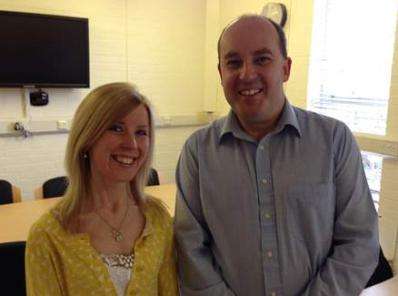Welsh "data detectives" use maths to save lives

It's mid-morning on an emergency medical ward. Medics rush; patients wait. The queue grows longer. To the naked eye, it's delay. To hospital managers, it's a potential waste of time and resources. But to mathematicians, it's a challenge.
What's causing delay? How long is the wait? Is there a new process that can save not just time and money, but lives?
A new frontier in future NHS policy is being opened up at Cardiff University. By looking at the numbers and building models, mathematicians work as 'data detectives', tackling causes behind headlines of ambulance delays and trolley waits
Professor Paul Harper, head of Operational Research at Cardiff puts it plainly: "Maths saves lives." His words echo those of the great Victorians – Florence Nightingale and William Farr, who used maths to plot bodies on Crimean battlefields and pinpoint sickness on the streets of London.
An innovative modelling unit set up between the University and Aneurin Bevan University Health Board puts maths at the heart of medicine, helping managers match capacity to demand.
The team built a simulation model at the Royal Gwent Hospital to study patient flows through the Accident and Emergency unit. And in South London, Cardiff mathematicians helped reduced the mortality of stroke patients by 60 per cent through the creation of a new Stroke Unit, and reduced the mortality of trauma patients, too.
"We can use data to forecast demand," said Professor Harper, Director of Health Modelling Centre Cymru. "We've produced models for emergency medical services, helping managers pinpoint the best places to locate ambulances to maximise survival. We've also designed models to forecast ambulance demand and roster paramedics."
"It's about matching capacity to demand," says Dr Julie Vile, from Neath, one of four mathematicians in the modelling unit. "Modelling helps managers get the right resources in the right place at the right time."
"We are embedded in the Health Board, so we're able to see problems up front, talk to managers, and help them develop creative solutions," added Dr Vile, who's been nominated for a Science, Education and Technology for Britain Award.
"At the Royal Gwent Hospital, we've been able to custom-build a simulation model of flows in A&E. This means that we're able to see bottlenecks on a computer screen, and work out where changes need to be made. For instance, we've looked at the 'Clinical Decisions Unit', where patients are sent if they need to spend less than 24 hours in hospital, and we found that by 'ring-fencing' the beds, overall waiting times could be brought down."
"By modelling simulations of real life scenarios, managers can change things on screen first before they do it for real – in effect, they can try before they buy. We can show managers things that can't be seen with the naked eye – allowing them to look at different performance measures and predict what could happen if things were changed."
Experts believe modelling healthcare could cut NHS costs by 20 per cent, while raising capacity and quality. The Cardiff team recently showed examples of their work in Aneurin Bevan to the Cumberland Initiative - a UK collaboration of clinicians, managers, modellers, academics and industry specialists committed to moving healthcare delivery from reaction to prediction.
The work has been commended by senior NHS figures at Westminster. "The project is bringing together academics, clinicians, and industrialists, helping to save lives, improve services and cut costs," adds Dr Vile.
"Enthusiasm within the NHS is beginning to grow. It's an exciting job, in exciting times, and it gets me out of bed every morning. I began work with the Health Board in Gwent a year ago and have enjoyed seeing the modelling unit grow and develop over the last year. When starting, I was the first of a new generation of modellers to be embedded in NHS Wales, but now I work alongside three other modellers and in close collaboration with another Cardiff University Research Associate who has recently joined Cardiff and Vale UHB. The size of our team allows us investigate multiple projects simultaneously, for example to predict the expected impacts arising from restructuring services or changing shift patterns."
Julie hopes simulation and modelling will eventually be in-built in hospitals across the UK. "Maths isn't just about numbers, and politicians are beginning to recognise the benefits modelling can offer to patients as part of a systematic approach to service improvement. Hopefully, modelling will shape the future of the NHS."

















